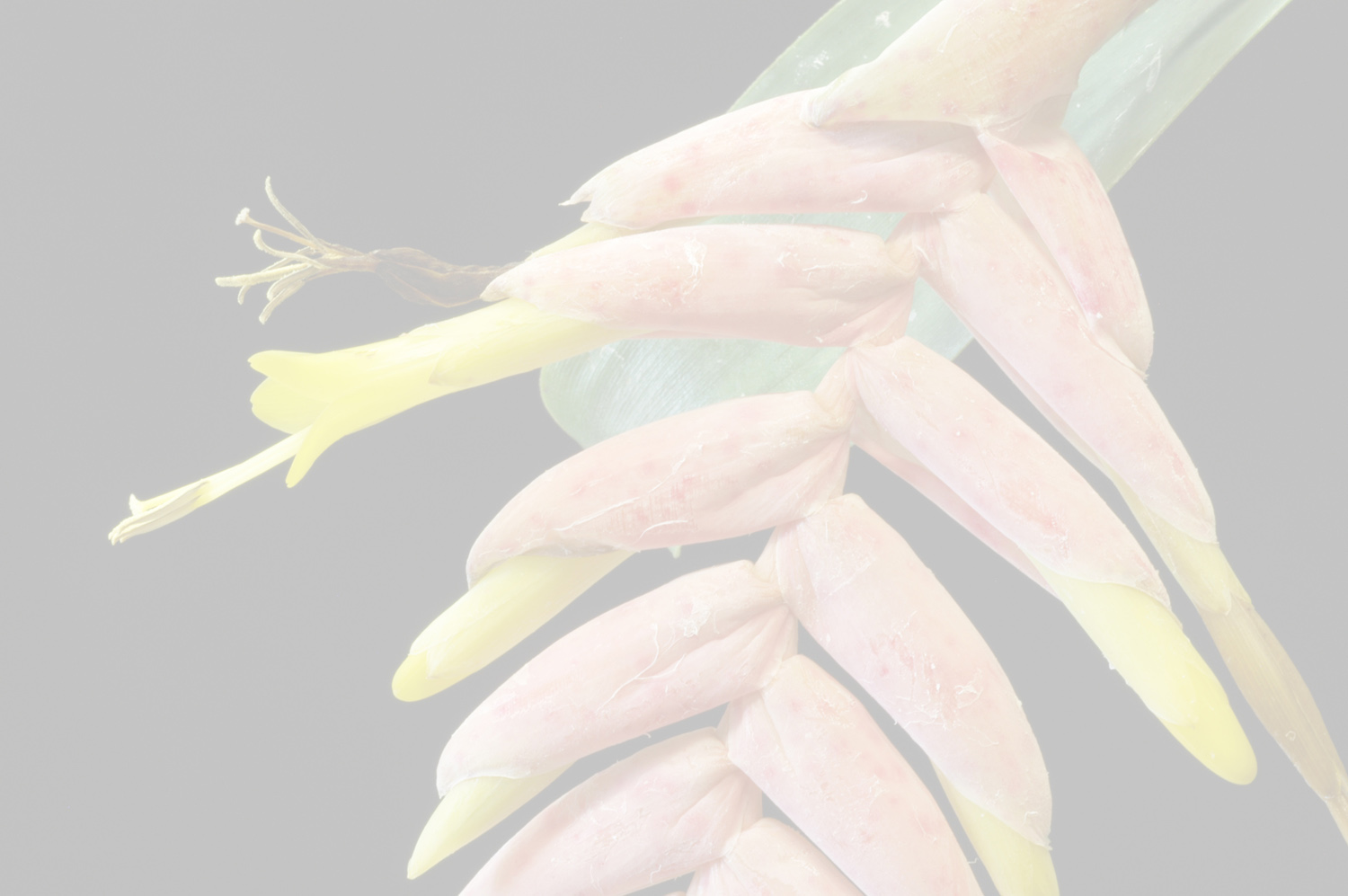


plant stemless, flowering to 60 cm high. leaves numerous, erect, the top third reflexed, making a 70 cm wide rosette; sheath distinct, to 15 cm long, 8 cm wide, the young leaves leathery brown, later dark black brown; blade becoming soft, limp, 40–50 cm long, thin triangular, 3 cm wide next to sheath, long attenuate, channelled, topside yellowish, underneath dense silver grey scaled. inflorescence mostly shorter than the leaf rosette, including the top spike to 50 cm long, laxly once-branched; peduncle shorter than the leaf rosette, erect, 20–25 cm long, 1 cm thick, round, pale green, glabrous; peduncle bracts those at the bottom adjacent to the peduncle with long, to 4 cm long, brownish red scaled sheath and a hanging, thin, light yellow white scaled blade, the upper bracts are larger, truncate; with long pale carmine red sheath and shorter, greener, rolled back blade; rachis ca 15 cm long, not visible, densely enclosed by the primary bracts; primary bracts same shape as peduncle bracts but smaller; fertile section of inflorescence (including end spike) 10–15 cm long, at time of anthesis 20 cm wide; spikes numerous, ca 15 arranged spiraly slanting outwards, 1.5 cm long stem and then with flowerless but laxly distichous, leafy, to 4 cm long, erect, adjacent to the rachis, sterile section; fertile section complanate, sticking out to bent upwards, 12-(20) cm long, very thin, pre floral 0.5 cm wide, at flowering to 1 cm wide; spikes* rachis edged, green, dense white woolly, scarcely visible when dry; floral bracts densely imbricate, indistinctly to distinctly ( when dry) keeled, to 15 mm long, at the base 5 mm wide, acuminate, carmine red, at the bottom green, scattered white woolly lepidote; particularly the edges, later the wide part becoming glabrous, much exceeding the sepals. flowers: sepals white, membranous, 10 mm long, acuminate, the adaxial ones keeled and joined for 3 mm; petals thin, lancelike, to 20 mm long, 2–3 mm wide, with short, rolled back, serrated at the tip and the edges on the top half, pale blue, with 2 erect high ligules with serrated top; after flowering a lively carmine red colour. stamens and style deply enclosed, filament white, plicate and pleated transversely.Translated by Butcher (30-10-2018) from: Rauh 1983b. Bromelienstudien (Mitteilung 13). I. Neue und wenig bekannte Arten aus Peru und anderen Lšndern .